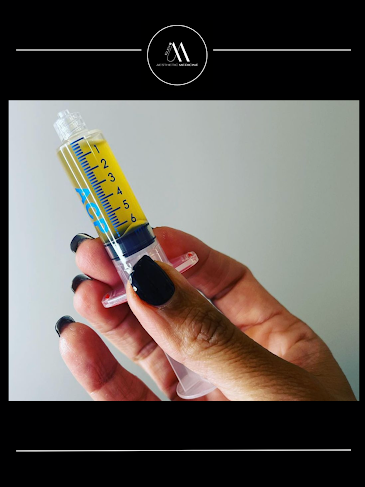PRP (Platelet-Rich Plasma) therapy is a medical procedure that is sometimes used as a treatment for hair loss. Here is an explanation of how PRP for hair loss is used:
- Initial Consultation: The process begins with a consultation with a healthcare professional, typically a dermatologist or a specialized hair restoration expert. They will evaluate your hair loss condition, medical history, and assess whether PRP therapy is a suitable treatment option for you.
- Blood Sample Collection: During the PRP procedure, a small amount of blood is drawn from your arm, similar to a routine blood test. The blood is collected in a tube and then processed to separate the platelet-rich plasma from other components of the blood.
- Centrifugation: The collected blood sample is placed in a centrifuge, a machine that spins the tube at high speeds. This spinning motion separates the blood into different layers based on density. The platelet-rich plasma is concentrated and extracted from the rest of the blood components.
- Preparation of PRP: Once the platelet-rich plasma is obtained, it is further processed and activated. Sometimes, additional substances like calcium chloride or other activating agents may be added to stimulate the platelets. This step ensures that the PRP is rich in growth factors and other bioactive substances that promote hair growth.
- Administration of PRP: The prepared PRP is then injected into the areas of the scalp where hair loss or thinning is present. Prior to the injections, the scalp is typically numbed using a local anesthetic to minimize discomfort. The PRP is introduced into the scalp through a series of small injections using a fine needle or a specialized injection device. The number and frequency of treatments can vary depending on the individual’s condition and the recommendations of the healthcare professional.
- Post-Treatment Care: After the PRP injections, you may be advised to avoid washing your hair or applying any hair products for a specific period of time. It is essential to follow the post-treatment instructions provided by your healthcare professional to optimize the potential benefits of PRP therapy.
The theory behind PRP for hair loss is that the growth factors and other bioactive substances present in the platelet-rich plasma help stimulate the hair follicles, promote hair growth, and improve the overall condition of the scalp.
It’s important to note that the effectiveness of PRP therapy for hair loss can vary among individuals, and it may not be a suitable treatment for all types and causes of hair loss. It’s recommended to consult with a qualified healthcare professional to determine if PRP therapy is appropriate for your specific condition and to discuss the potential benefits and limitations of the treatment. If you wish to learn more, please click here.

